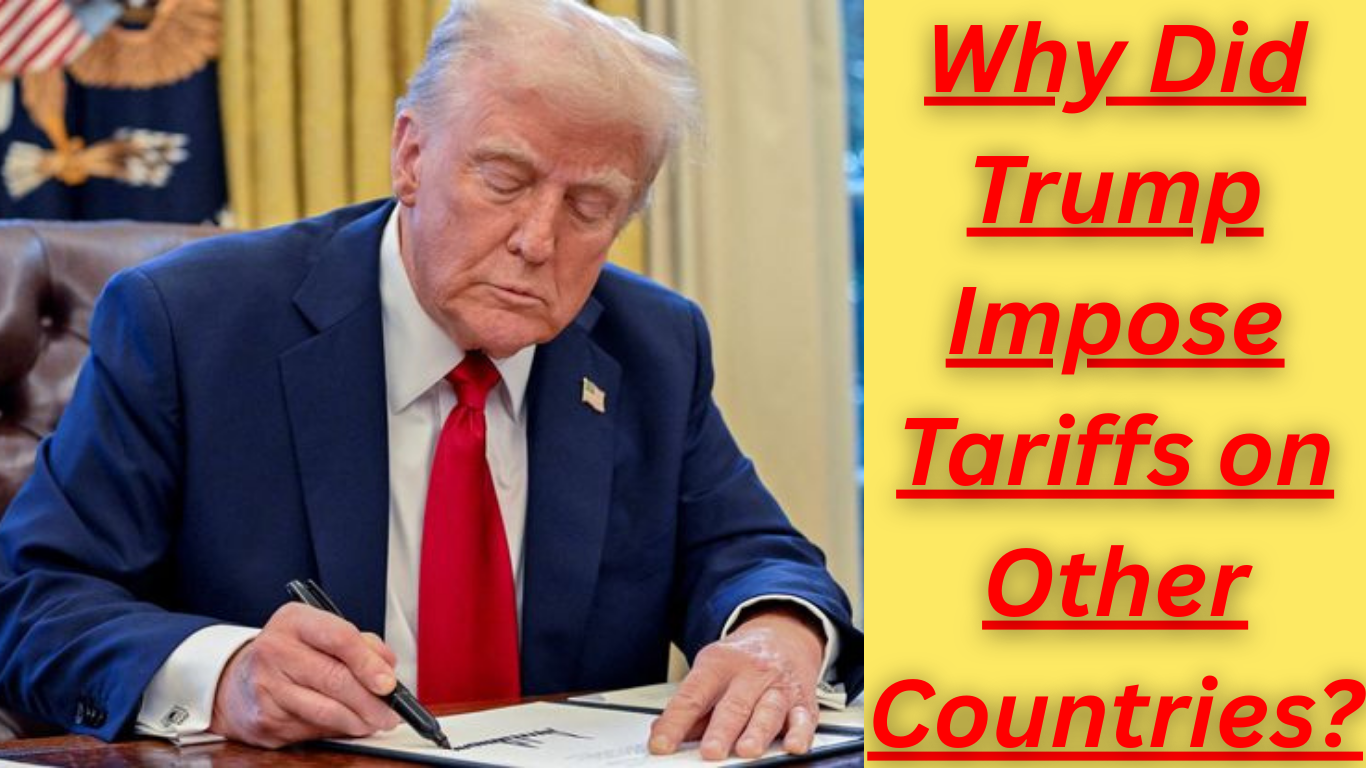Introduction
Trade policy has long been a key pillar of U.S. economic strategy, but few presidents have wielded tariffs as boldly as Donald Trump. During his presidency (2017–2021), Trump launched a series of aggressive tariff campaigns targeting imports from China, the European Union, Canada, Mexico, and others. These actions sparked global debates around protectionism, economic nationalism, and the future of free trade.
1. The Economic and Political Rationale Behind Trump’s Tariffs
A. The “America First” Trade Doctrine
Trump’s 2016 campaign was rooted in economic nationalism. He argued that globalization had decimated American industries and cost millions of U.S. jobs. His core justifications for imposing tariffs included:
- Protecting American Industries: Tariffs were designed to defend key sectors—like steel, aluminum, and automobiles—from foreign competition.
- Reducing the Trade Deficit: With the U.S. running a $500+ billion annual trade deficit, Trump blamed “unfair” trade deals for the imbalance.
- Countering Unfair Trade Practices: China, in particular, was accused of intellectual property theft, forced technology transfers, and dumping cheap products.
B. Legal Justifications
Trump invoked:
- Section 232 of the Trade Expansion Act of 1962 (on national security grounds)
- Section 301 of the Trade Act of 1974 (to combat unfair trade practices)
Key examples:
- Steel (25%) and Aluminum (10%) Tariffs (2018): Aimed at curbing Chinese overproduction threatening U.S. defense sectors.
- China-Specific Tariffs ($360+ billion): Retaliation for IP violations and trade imbalances.
C. Political Strategy
- Appealing to Rust Belt Voters: Tariffs resonated with blue-collar workers in key states like Pennsylvania, Ohio, and Michigan.
- Bargaining Tool: Used as leverage in trade renegotiations, including NAFTA’s overhaul into the USMCA.
2. Key Tariff Policies and Their Targets
A. The U.S.–China Trade War
- Initial Phase (2018): $50 billion in tariffs targeting tech goods.
- Expansion (2019): Added $200 billion more, including electronics, furniture, and clothing.
- China’s Response: Tariffs on U.S. agriculture—especially soybeans and pork—hurt American farmers.
B. Steel and Aluminum Tariffs
Initially exempting the EU, Canada, and Mexico, the U.S. later applied these tariffs in 2018:
- Retaliation:
- EU targeted bourbon and motorcycles.
- Canada responded with duties on dairy and other products.
C. Renegotiating NAFTA (USMCA)
Trump threatened auto tariffs to bring Canada and Mexico to the table, leading to:
- Stronger labor rules
- Higher North American content requirements in auto manufacturing
3. Impact of Trump’s Tariffs
A. Supporters’ Claims of Positive Effects
- Revival of Manufacturing: Temporary uptick in U.S. steel production (2018–19).
- Leverage Over China: Led to the “Phase One” deal, with China promising $200 billion in purchases.
- USMCA Success: Brought new labor and trade rules benefiting key U.S. sectors.
B. Negative Economic Consequences
- Higher Prices for Consumers: Tariffs on Chinese imports added an estimated $1,277/year per household (NY Fed).
- Struggling Farmers: China’s retaliation led to $11 billion in farm bankruptcies; Trump issued $28 billion in bailouts.
- Global Supply Chain Disruptions: Tariffs led to cost increases and layoffs in export-reliant industries. The WTO warned of a $575 billion hit to global trade.
- Decline in U.S. Exports: Companies like Harley-Davidson moved production abroad to avoid retaliatory tariffs.
4. Criticisms and Legal Challenges
A. Economists’ Concerns
- A majority (85%) of economists surveyed by the IGM Forum opposed tariffs.
- The Tax Foundation estimated long-term GDP loss of 0.2% due to Trump’s trade policies.
B. Legal Pushback and WTO Complaints
- Multiple countries challenged U.S. tariffs at the WTO—some successfully.
- Critics argued Trump’s national security rationale (Section 232) was a thinly veiled excuse for economic protectionism.
C. Political Division
- Within the GOP: Libertarian-leaning Republicans like Rand Paul opposed the tariffs.
- Among Democrats: Mixed response—some supported a tougher stance on China but condemned the negative impact on farmers and consumers.
5. Long-Term Consequences & Future of U.S. Trade Policy
A. Biden’s Approach: Tweaking, Not Reversing
- Maintained many of Trump’s China tariffs but introduced exemptions.
- Emphasized “friend-shoring”—prioritizing trade with trusted allies.
B. Global Shift Toward Protectionism
- Inspired similar policies in the EU, UK, and India.
- Companies began diversifying supply chains away from China to reduce dependency.
C. Lessons for Policymakers
- Tariffs as a Short-Term Tool: Immediate results were often offset by long-term economic pain.
- The Case for Multilateralism: Unilateral tariffs led to retaliation and strained alliances.
Conclusion
Trump’s tariff policy marked a dramatic break from decades of U.S. free trade orthodoxy. While it reshaped negotiations—most notably through the USMCA and the China Phase One deal—it also triggered consumer price hikes, farm distress, and global economic uncertainty.
As future administrations weigh the balance between economic nationalism and global cooperation, Trump’s tariffs remain a defining—and divisive—case study in modern trade policy.

